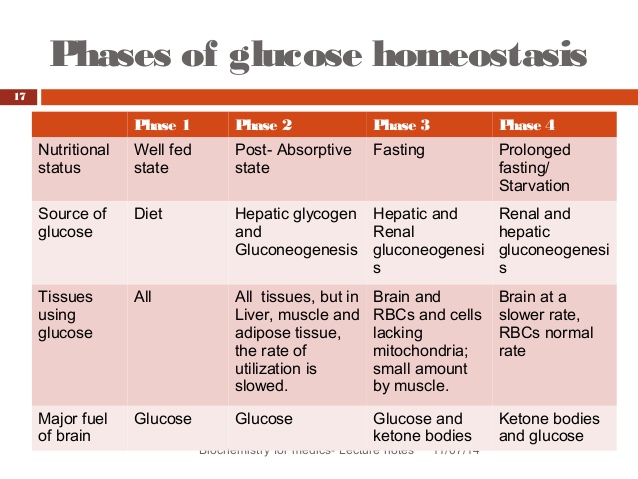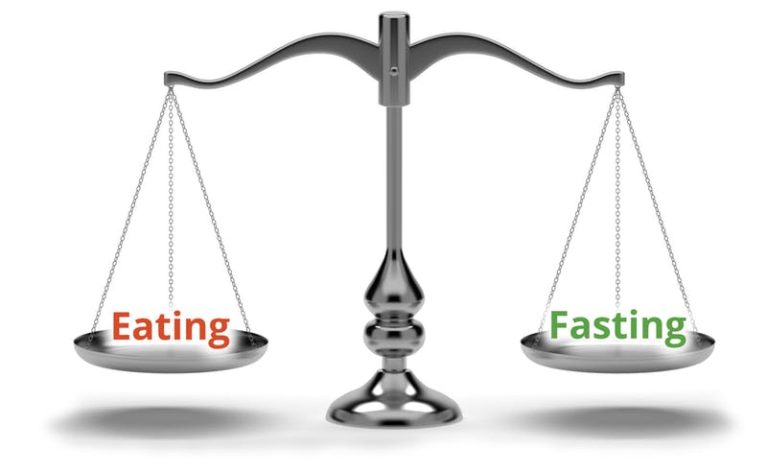I’ve been helping people get healthier, fitter and happier for over fifteen years now. One area that has continued to frustrate me is helping people lose weight. I know my clients try: they eat less and move more, but though the weight comes off at the beginning, they often plateau or the pounds creep back on as they get discouraged and revert back to a more sedentary lifestyle and unhealthy eating habits. This problem is well documented in weight loss studies. For example, Biggest Loser contestants almost all gained the majority of their weight back and saw their resting metabolic rates plunge. However, there are individuals who have lost weight and kept it off. Across the board these folks have attributed lifestyle changes to their success. I’ve been on a quest to research what lifestyle changes will help my clients lose weight and improve their health, while being relatively easy to implement and most importantly, easy to maintain. I’ve written about hacks such as Thermogenesis and Behavior Changes but there are two other concepts that show promise in the weight loss battle, and also appear to improve general health markers: Time Restricted Feeding (TRF) or Intermittent Fasting (IF). Though these protocols are often used interchangeably, I’ll go over the differences below and introduce you to two people whose research work I’ve been following. DISCLAIMER: This post is for information purposes only and not designed to be a diet recommendation. Please consult with your doctor before embarking on any type of TRF or IF program.
Time Restricted Feeding (TRF)
TRF is eating within an 8 – 12 hour window that begins when the first food or non-water drink enters your mouth. Though coffee or herbal tea may not have calories, they are metabolized by the liver and start your “circadian metabolic clock”. A leading expert in the field is Satchin Panda, a regulatory biology professor at the Salk Institute and an expert on “the genes, molecules and cells that keep the whole body on the same circadian clock”. Dr. Panda believes our societies chronic diseases (heart, cancer, respiratory, diabetes, Alzheimer’s, etc.) can be reduced by paying attention to our natural circadian rhythm, which has been disrupted by modern living, e.g. too much exposure to blue lights from electronic screens and junk fluorescent lights in buildings. He’s not saying go back to 1800, but he is trying to help us live healthier lives by paying attention to our natural circadian rhythms when it comes to sleep and food.
One of Dr. Panda’s more intriguing studies is where mice were fed unhealthy chow (the equivalent of humans eating doughnuts, pork rinds and pizza). One group of mice was allowed to eat at their pleasure and predictably gained weight and became insulin resistant. The other group of mice ate the same amount of unhealthy chow in time restricted windows of 8 to 12 hours. Surprisingly these mice avoided obesity and insulin resistance and even managed to put on some muscle mass.
Now mice aren’t human, but Dr. Panda has also been working with humans to see if they get the same results from TRF. I listened to an interview with him on Dave Asprey’s Bulletproof Podcast, where he talked about putting his type II diabetic mother on TRF when she came to visit him and despite her initial reluctance, was pleasantly surprised to learn her blood sugar levels and other health factors improved. Dr. Panda’s research has demonstrated that TRF has health benefits that may include:
- reductions in fat mass
- increases in lean muscle mass
- lower inflammation
- improved heart function with age
- increased mitochondrial volume
- ketone body production
- improved repair processes
- aerobic endurance improvements
I’ve listened to several podcasts with Dr. Panda and he seems extremely genuine in his desire to help people. In order to get as much data on people’s eating habits (times and portions) as well as their sleep and exercise regime, he created an app https://mycircadianclock.org/ to help him gather data and further his studies:
- Phase 1: The first week or two you record a baseline, determining the what, when and how much you normally eat, sleep and move around.
- Phase 2: After receiving a report summarizing your lifestyle based on the baseline period, you self-select an 8-10 hour feeding time window.
As I type this, I’m in Phase 1 of the study. I find it very exciting to be helping this awesome research.
Here are a few things Dr. Panda learned through his research:
- Though almost all people told him they ate within a 12 hour period, virtually half actually ate within a 15 hour window.
- He had eight participants, who were eating for 14 hours or longer, eat within eleven hours or less. The participants were allowed to self-select their eating window. After 16 weeks, participants lost about 4% of their body weight. They also reported feeling and sleeping better. Data indicated these folks ate 20% fewer calories, though they weren’t asked to change what they were eating. Study was small, and inconclusive, as the weight loss could be due to the calorie reduction or TRF.
- As a follow-up to the last bullet, people drink most of their coffee in the morning and most of their alcohol in the evening. If you TRF in the morning, you generally will improve diet as alcohol and desserts are reduced.
- Insulin sensitivity changes with time of day. Panda has discovered a relationship between melatonin and insulin sensitivity indicating your eating is impacted by circadian rhythm. Late night eating might reduce weight loss.
- A nine-hour feeding window seems to enhance endurance. I will remember this next time I’m training for a marathon!
Intermittent Fasting (IF)
IF differs from TRF in that subjects are encouraged to restrict calorie intake for periods (even days) at a time. With IF you are allowed to consume non-caloric items such as coffee and herbal tea, which start your metabolism, but don’t give the body energy. A leading researcher in this field is Dr. Jason Fung, a Canadian nephrologist (kidney expert) and co-author of the book The Complete Guide to Fasting: Heal Your Body Through Intermittent, Alternate-Day, and Extended Fasting . Dr. Jason turned to IF to help his Type II diabetic patients with weight loss when the standard calories in/out model wasn’t working. (Diabetes is the leading cause of kidney disease.) In researching how to better help his patient’s he realized the standard protocol of giving them insulin (which they already had, but were unable to utilize) was only making them fatter. He decided he had to reduce their blood sugar and initially prescribed low-carb diets, but found his patients had trouble complying to the eating plans. Then he stumbled upon fasting, a dietary therapy that had been followed for millennia (virtually every major religion observes some form of fasting ritual) but had fallen out of favor.
If you want to geek out on the metabolic changes in fasting, here are the transitions from fed state to fasted state (or burning glucose to burning fat) as described by George Cahill. Feel free to skip this section if you don’t feel like putting on your propeller hat.
- Feeding: Blood sugar levels rise as we absorb the incoming food and insulin levels rise in order to get energy into the cell
- Postabsorptive Phase: Six to twenty four hours after feeding blood sugar and insulin levels begin to fall. Liver starts to break down glycogen to release glucose. Glycogen stores last for 24 to 36 hours.
- Gluconeogenesis: When glycogen stores run out, gluconeogenesis happens. It is the process by which the liver starts to manufacture glucose from amino acids and occurs twenty four to forty eight hours after beginning a fast.
- Ketosis: Ketosis has become very popular as a weight loss method. People are eating high fat diets or taking exogenous ketones to get into ketosis. My recommendation: do it by eating a healthy diet, coupled with fasting. Here’s a breakdown of this process as outlined in Jason Fung’s, Complete Guide to Fasting Book,: Low insulin levels stimulate lipolysis, the breakdown of fat for energy. Triglycerides, the form of fat used for storage are broken into the glycerol backbone and three fatty acid chains. The glycerol is used for gluconeogenesis, so the amino acids formerly used can be reserved for protein syntheses. The fatty acids are used directly for energy by most tissues of the body, though not the brain. The body uses fatty acids to produce ketone bodies which are capable of crossing the blood-brain barrier and are used by the brain for energy. After four days of fasting, approximately 75 percent of the energy used by the brain is provided by ketones.
- The protein conservation phase: Five days into a fast, high levels of growth hormone maintain muscle mass and lean tissue. The energy for basic metabolism is almost entirely supplied by fatty acids and ketones. Blood glucose is maintained by gluconeogenesis using glycerol. Increased norepinephrine (adrenaline) levels maintain metabolism.

Fuel Metabolism with Fasting, Source: Cahill
I’ve been following a 12-14 hour IF cycle for years, but after reading Dr. Fung’s book, I shortened my feeding window to eight hours and then six and finally adopted a one-day a week 24 hour fast. I am also experimenting with 48 and 72 hour modified fasts (I still drink bone broth and Kombucha). My goals, aren’t weight loss, but improvement in general health markers and anti-aging benefits such as:
- Increased insulin sensitivity.
- Less blood sugar volatility.
- Improved cardio-vascular blood markers. For example, Lp(a) (Lipoprotein a) a risk factor in the development of cardiovascular disease is known to plummet with fasting.
- Increasing blood ketones helping my body become more metabolically flexible, i.e. being able to use both ketones and glucose for energy.
- Naturally increase levels of HGH (human growth hormone), which naturally drop as we age resulting in more body fat, less muscle mass and decreased bone density.
- Improved atophogy, the process by which the body cleanses itself by breaking down junk cells, i.e., those cells that might cause trouble by becoming cancerous.
- Reduced inflammation.
- A better understanding of what “hunger” really is. Have you ever noticed that if you get hungry, but don’t allow yourself to eat right away, the hunger dissipates? Maybe the impulse to eat can’t be taken seriously?
- By fasting I’m forcing my body to become better at burning fat. This is important for a long-distance runner like me. I probably have only 2,000 calories worth of glucose (sugar) to burn, but about 40,000 calories of fat. I want to tap into the fat to improve my performance.
However, if weight loss is your goal, Dr. Fung has some science backed studies as to why reducing calories is less effective than fasting, especially if you’re still eating carbs. In a nutshell: if you reduce calories your body will still rely on glucose vs burning fat. However, if you stop eating, your body thinks no more glucose is coming and it will start to burn your fat. This is why people who consistently eat only 1200 calories a day (which should allow for weight loss) end up plateauing. In addition, with prolonged fasting (>48 hours) ghrelin (the hunger hormone) drops. The hormonal signal between calorie reduction and fasting is different to the body. As long as insulin is elevated the body can’t get rid of fat. This is why Dr. Fung is a huge proponent of low-carb and ketogenic diets. That said, he’s not opposed to all carbs or a fan of all fats. For example, kale and grass fed butter are great, while Cheerios and margarine should be avoided.
Most people are aware that carbohydrates are absorbed and quickly turn into glucose, raising blood sugar levels and though protein doesn’t raise blood glucose it can stimulate insulin. On the other hand, fats are directly absorbed as fat and have minimal effect on insulin. Dr. Fung recommends clients stick to a good, nutrient-dense low-carb diet and get fat adapted for a while before experimenting with fasting. Once you’ve adapted, balance fasting with feeding.
There are some tips in Dr. Jason Fung’s book for successfully fasting, and I highly recommend the book. Since I’ve already borrowed heavily from his work, and want to give back, I’ll encourage you to pick up a copy to learn his tips directly. However, here are words of advice:
- Stay busy. If you’re bored you are more likely to crave food.
- Do low levels of activity. For example, easy walk, swim or sauna.
- Drink liberal amounts of mineral water (e.g. Pellegrino or Gerolsteiner).
- Chew sugarless gum.
- Be careful with too much coffee as it can make you jittery. Matcha and tea (regular or herbal) are better options in the afternoon.
- Anticipate that you will be hungriest around your normal eating times. This is because your body is used to being nourished at that time and will start anticipating food. Think of Pavlov’s dogs salivating at the sound of a bell. Make sure your busy during these feeding times!
- If you’re competitive, use a timer to count down to the end of your fast.
- Continue to take your vitamin and mineral supplments.
- For fasts longer than 48 or 72 hours, you might want to consider ingesting some Kombucha or bone broth with sea salt to keep electrolytes in balance.
- Fasting should be a hermetic (beneficial) stressor to the body, if it’s not discontinue. Especially if there are other life stressors at play.
Conclusion
I’ve been a full-time fitness professional since 2002 and the message on weight loss that I’ve given my clients has changed dramatically. In the early years I was all about five to six small meals a day to keep the “metabolic furnace” stoked; a calories in/calories out model of weight loss and high carb, low fat, moderate protein eating plans. This is what the experts said worked and I passed the information on verbatim. As I’ve gained experience, I still believe that calories matter, but so does quality of food, eating timing, stress management and sleep. Those are the big rocks and my goal is to help you optimize those factors so you can function, look and feel your best. Stay well my friends.

